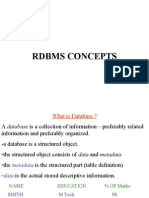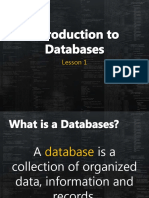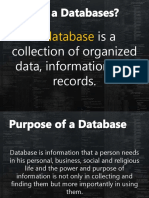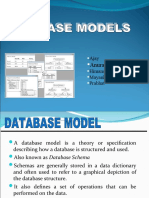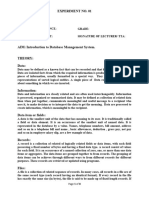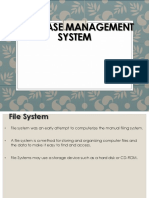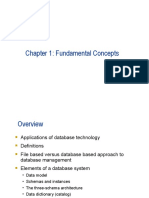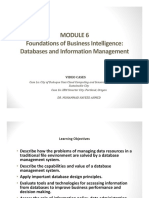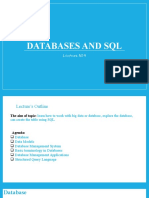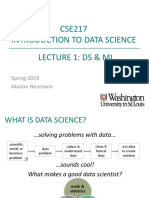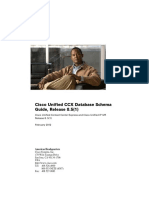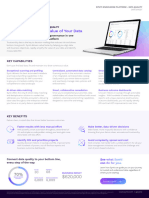0% found this document useful (0 votes)
414 views2 pagesFundamental Database Concepts
Table/Relation is the fundamental object of a database structure used to store data. A table consists of rows and columns, with rows representing records of related data fields arranged horizontally and columns representing individual fields arranged vertically. There are different database structures for organizing data, including hierarchical, network, relational, and object-oriented. Relational databases represent data as a collection of relations in the form of tables, with each row representing a real-world entity or relationship. Object-oriented databases follow object-oriented programming principles by representing data as objects and classes. Database development involves obtaining requirements, analyzing and designing the data system, and implementing operations to meet an organization's business needs and provide information to shareholders.
Uploaded by
Zunii WarraichCopyright
© © All Rights Reserved
We take content rights seriously. If you suspect this is your content, claim it here.
Available Formats
Download as DOC, PDF, TXT or read online on Scribd
0% found this document useful (0 votes)
414 views2 pagesFundamental Database Concepts
Table/Relation is the fundamental object of a database structure used to store data. A table consists of rows and columns, with rows representing records of related data fields arranged horizontally and columns representing individual fields arranged vertically. There are different database structures for organizing data, including hierarchical, network, relational, and object-oriented. Relational databases represent data as a collection of relations in the form of tables, with each row representing a real-world entity or relationship. Object-oriented databases follow object-oriented programming principles by representing data as objects and classes. Database development involves obtaining requirements, analyzing and designing the data system, and implementing operations to meet an organization's business needs and provide information to shareholders.
Uploaded by
Zunii WarraichCopyright
© © All Rights Reserved
We take content rights seriously. If you suspect this is your content, claim it here.
Available Formats
Download as DOC, PDF, TXT or read online on Scribd
/ 2









